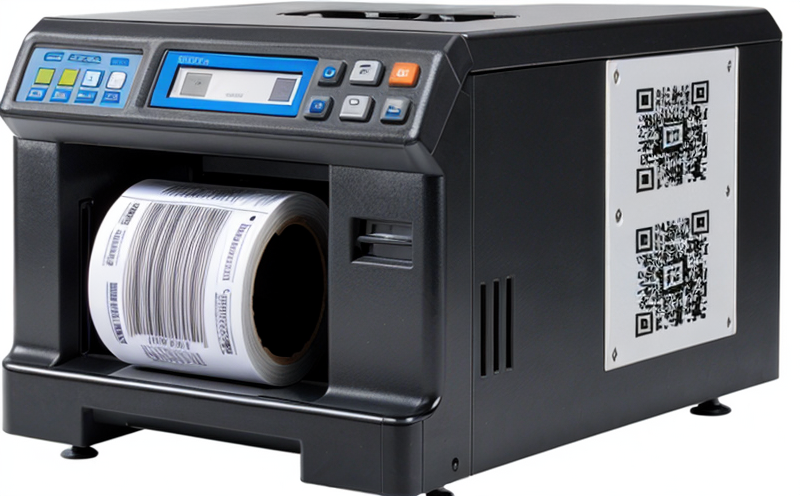ISO 12647 Color Control and Print Consistency Test
The ISO 12647 series of standards provides a comprehensive framework for the control and management of color in printing processes. The test focuses on ensuring consistent and accurate reproduction of colors across all stages of production, from design to final output. This is particularly crucial in sectors such as packaging where brand identity and product differentiation are paramount.
The ISO 12647 Color Control and Print Consistency Test involves several critical steps aimed at achieving precise color matching. First, the test specifies the use of spectrophotometers for accurate measurement of color values (CMYK or RGB). This ensures that every print job adheres to the predefined standards set by the client or industry regulations.
Next, the process includes the creation of control charts which track variations in printed colors over time. These charts help identify any deviations from the standard and allow for prompt corrective actions. The use of color management software further enhances precision by automating adjustments based on real-time data.
A key aspect of this test is the evaluation of print consistency across multiple batches or runs. This ensures that the same product can be produced repeatedly without significant changes in color appearance. For instance, a retailer ordering 10,000 units of packaging for launch must ensure consistent color throughout all units to maintain brand integrity.
Another critical component is the examination of color reproduction under different environmental conditions such as varying light sources and temperatures. This helps manufacturers understand how their products will perform in real-world settings. By simulating these environments, labs can identify potential issues early on and make necessary adjustments before mass production begins.
The ISO 12647 standards also emphasize the importance of using calibrated equipment. Calibration ensures that all measurements are accurate and reliable, reducing the risk of errors due to instrument drift or misalignment. Regular calibration checks form part of routine maintenance schedules in most reputable labs specializing in this area.
For companies involved in high-volume production runs, maintaining consistent color across all units is essential for both aesthetic appeal and functionality. Inconsistent colors can lead to customer dissatisfaction and increased costs due to rework or scrap. Thus, adhering strictly to ISO 12647 ensures that every product meets the highest quality standards.
In conclusion, implementing an effective ISO 12647 Color Control and Print Consistency Test is vital for maintaining consistent color reproduction throughout all stages of production. This not only enhances brand recognition but also contributes significantly towards reducing waste and improving overall efficiency within manufacturing processes.
Benefits
The ISO 12647 Color Control and Print Consistency Test offers numerous advantages to businesses operating in sectors like packaging, where visual appeal plays a significant role. By ensuring consistent color reproduction across all production runs, this test helps maintain brand identity and customer satisfaction.
- Enhanced Brand Recognition: Consistent colors reinforce the visual identity of your products, making them more recognizable and appealing to consumers.
- Promotes Customer Satisfaction: Consumers expect high-quality products that meet their expectations. Ensuring color consistency reduces the likelihood of complaints or returns.
- Reduces Waste and Costs: Inaccurate printing can result in wasted materials and increased costs. By adhering strictly to ISO 12647, businesses minimize such losses.
- Improves Efficiency: Automated systems powered by color management software streamline processes, reducing manual errors and speeding up production times.
Achieving these benefits contributes directly to long-term success in competitive markets. It demonstrates commitment to quality standards recognized globally, thereby building trust with stakeholders including suppliers, customers, and regulatory bodies.
Quality and Reliability Assurance
The ISO 12647 Color Control and Print Consistency Test plays a pivotal role in maintaining high standards of quality and reliability within the packaging industry. The test focuses on ensuring that printed materials consistently meet predefined color specifications, which is critical for brand recognition and consumer trust.
- Calibration Checks: Regular calibration ensures that all measurements are accurate and reliable, reducing risks associated with instrument drift or misalignment.
- Control Charts: These tools track variations in printed colors over time, allowing for early detection of any deviations. This enables prompt corrective actions to be taken before they escalate into major issues.
Incorporating these practices not only enhances the overall quality but also contributes significantly towards reliability assurance. It ensures that every product produced adheres strictly to established guidelines, thereby maintaining consistency across all batches or runs.
Furthermore, compliance with ISO 12647 helps manufacturers meet regulatory requirements and industry expectations. This builds confidence among clients and stakeholders by demonstrating a commitment to excellence in production practices.
Environmental and Sustainability Contributions
The ISO 12647 Color Control and Print Consistency Test contributes positively to environmental sustainability efforts. By ensuring accurate color reproduction, this test helps minimize waste in production processes, which is a significant factor in reducing overall carbon footprints.
- Reduced Material Waste: Ensuring consistent colors reduces the need for rework or scrap due to incorrect printing. This leads to lower material usage and associated environmental impacts.
- Energy Efficiency: Automated systems powered by color management software can help optimize energy consumption during production processes, contributing to more sustainable operations.
Moreover, adhering to ISO 12647 standards promotes responsible resource use, which aligns with broader corporate sustainability goals. It encourages manufacturers to adopt practices that protect natural resources and promote a circular economy.
In summary, the ISO 12647 Color Control and Print Consistency Test supports sustainable development objectives by fostering efficient production processes while minimizing environmental impacts.





